PHILIPS HEALTHCARE INFORMATICS SERVICE DESIGN | MY ROLE ART DIRECTOR
pyophthalmitis
unprefaced unexcogitativeoffendablestipulation
apsarases semeioticoverreflectiveRemote Ticketing & Servicing Tool
Context
Hospitals deploy and use thousands of sophisticated medical devices to understand a patient's condition, arrive at a diagnosis, and deliver effective treatments. These devices need to be up and running 24 hours a day 365 days a year, working at peak performance to deliver on the promise of safety and effectiveness for patients and clinicians. Additionally, to meet the changing needs of patients today and in the future clinical enterprises need to drive operational efficiency.
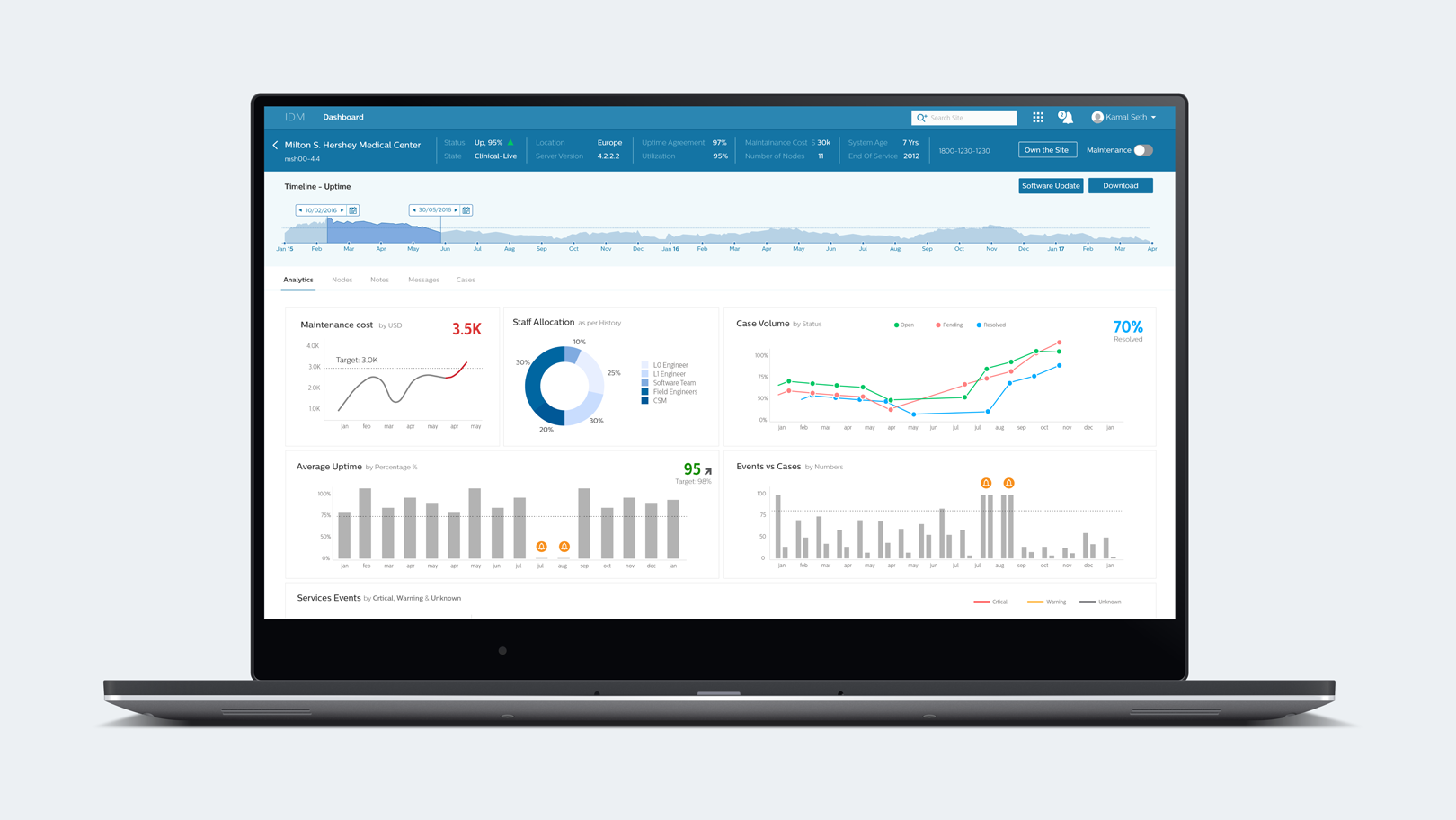
Philips Remote Monitoring Engineers (RME’s) are responsible for proactively monitoring these devices and related SW across customer sites around the world. The Intelligent Device Management (IDM) platform is aimed at supporting RME’s in this daunting task.
The initial design challenge was to understand and support how a proactive monitoring system could empower RME’s to handle critical situations easily as they proactively monitor, access, and repair products to eliminate downtime, system failures, and reporting gaps. Ideally, all of this would be done well before hospitals would be aware of or affected by any of these as they fully focus on delivering patient care.
Design Challenge
User Experience for Smart Triaging and reduced turn around time
With 3,000+ customer sites globally the data to be managed by Philips RME’s is massive. The conventional approach to their work was to Download log reports from every device deployed globally, Create spreadsheets, Apply filters to sort error events looking into the details of each, Convert these into error tickets, and finally Take the needed actions. All of this took far too much time, was prone to errors, and created stress for the RME’s. Research made it clear we needed to filter out unique and critical events from those that are routine (requiring no intervention), similar (batch operations), or repetitive (known specific interventions). Breaking the work into Efficiency, Performance, and Ease of Use drove team alignment to create a solid base to work from. These allowed us to Improve efficiency, Offer a lean workflow, and Achieve maximum uptime.
Design approach
Co-Creation was invaluable in understanding real issues and opportunities as well as forming partnerships to make them actionable. In each stage of the process (Discover, Frame, Ideate, and Build) design facilitated workshops that included end-users, business stakeholders, coders and designers. Also, qualitative research methods used with a small set of RME’s informed customer journey maps that identified gaps, challenges, and opportunities at each stage and against the three pillars of Efficiency, Performance, and Ease of use. A classification system of Painkillers (must-haves) and Vitamins (good to have) ideas emerged as an effective tool for team alignment on priorities.
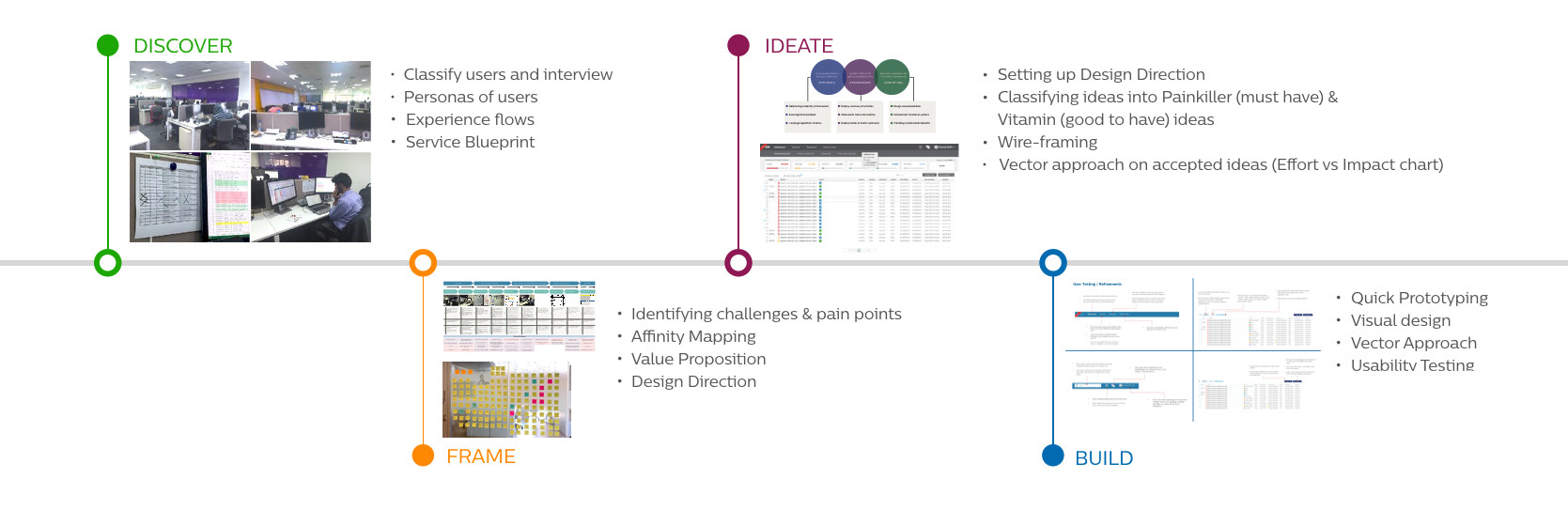
The proposed design from this process supports a smart triaging mechanism to…
1. Improve efficiency by highlighting unique and critical events assigned specifically to each RME through an innovative UI leveraging monitoring informatics. 2. Offer a lean workflow for opening & closing tickets by linking similar events, aiding batch operations, and the ability to perform smart filtering. 3. Achieve maximum uptime of HW and SW deployed at a given facility by highlighting the criticality of that sites in addition to the criticality of events.Personas
We conducted extensive user tests to research users who provided us insights into what their daily challenges were and how the existing system was not meeting their needs. Numerous insights were gained via Affinity Maps. Their daily challenges and pain points are; Lack of robust filters, Unstable backend, Lack of seamless workflow, Lack of personal metrics to measure efficiency, Cumbersome representation of data, Inability to identify repeat errors vs. fresh errors.
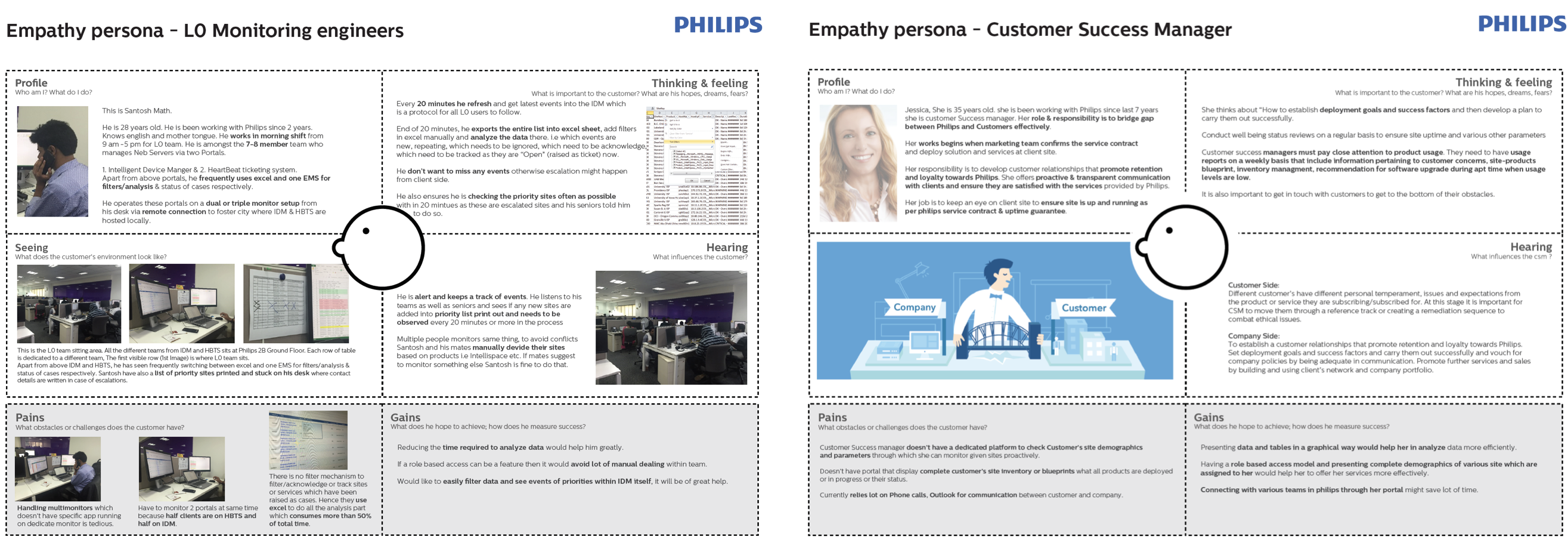
User Journey maps of Remote Monitoring Engineers
The journey-map outlined typical phases and pain points for the RME’s capturing steps and goals in each phase. This structure was critical for understanding research insights against the larger system as well as specific points in the UX and UI. This in turn informed a design proposal that was leveraged in a Usability and Feasibility study.
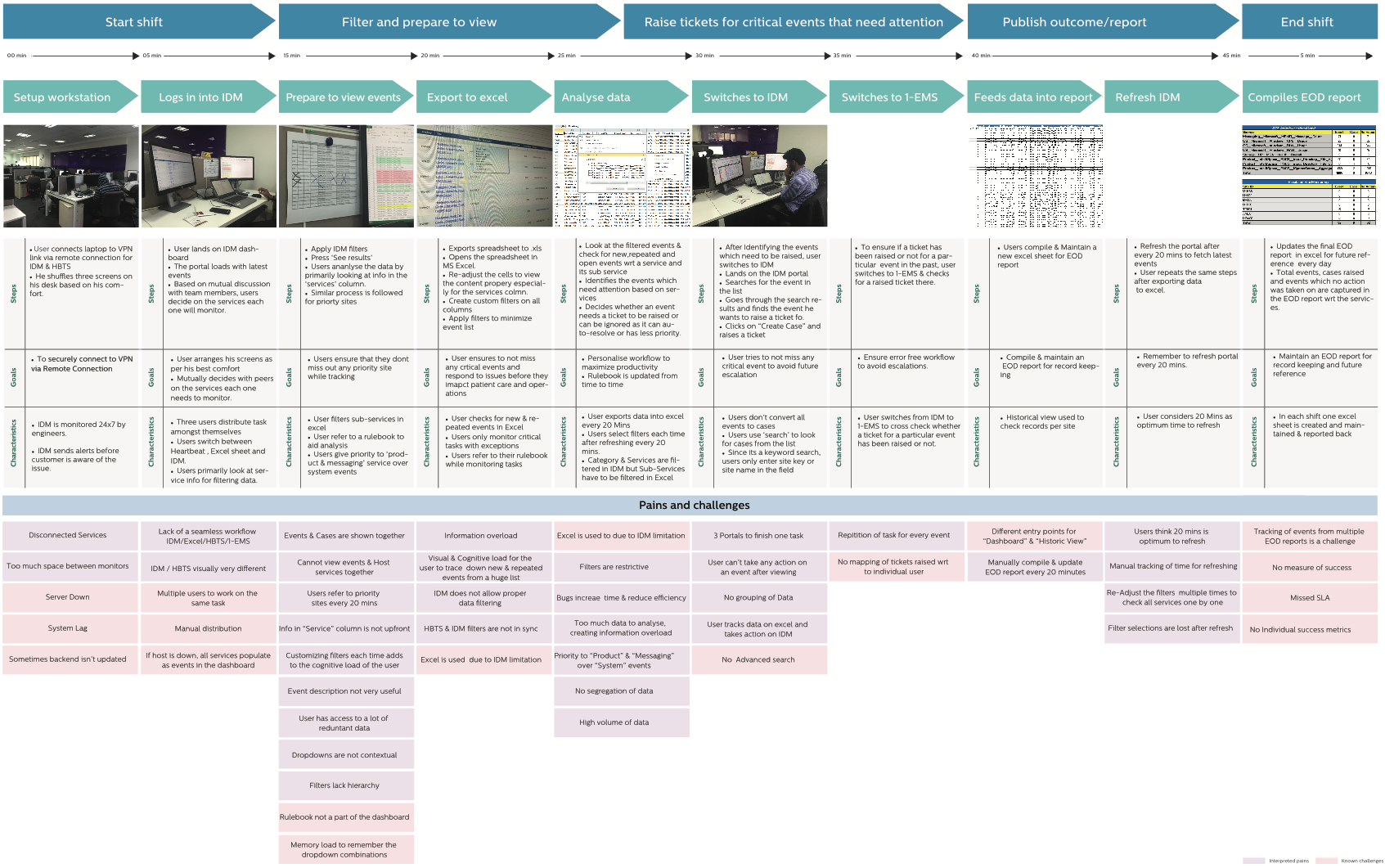
Service Design thinking
Mapping “As Is’ & “As If” service blueprints considered all the users and service touchpoints to understand and cater to the needs of relevant target users. These blueprints helped identify the necessary UX touchpoints to be added as well as redundant touchpoints to be removed for a lean distribution, deployment, and monitoring solution at customer sites.
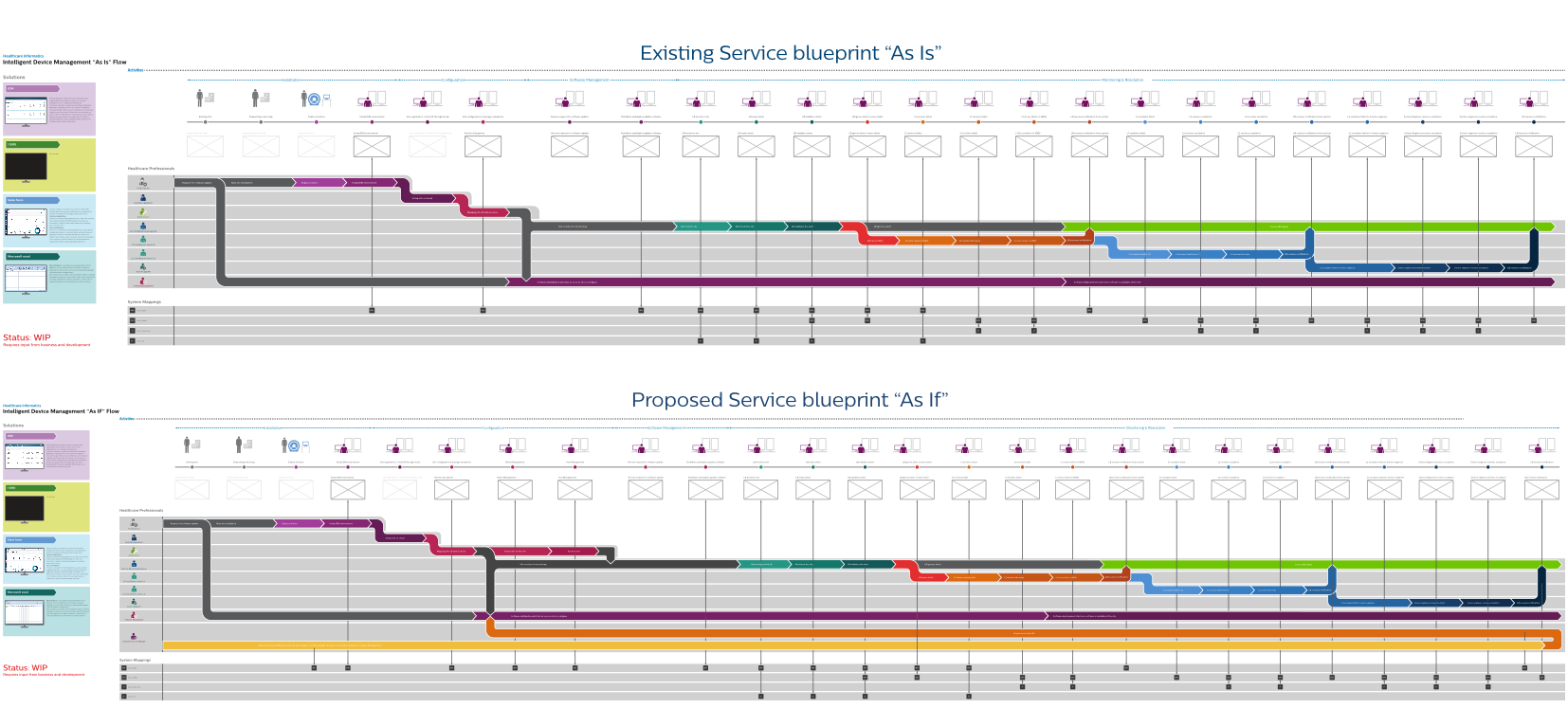
Uniqueness & Innovation
The new harmonized UI offers a unique, simplified, and rich data representation to clearly show the number of critical events, efficiency metrics, and events solved in a particular timeframe.
IDM’s design is aligned and contributes to the Philips design language system. Special attention has been given to signal colours, filters, and key performance indicators.
Innovation:
Role-based access adjusted to who is logging in with;
Specific landing page/dashboard,
Tailor-made views to perform their tasks,
Preview and monitoring time span,
Separate views & notification for priority sites.
Enable a hierarchy of filters to narrow down specific events based on product/criticalness.
An efficient method of raising/ignoring alerts in batches to increase productivity by curbing redundant tasks.
Result
IDM as a Service: Key service design touch-points
IDM has evolved into an umbrella of application for various users including Remote Monitoring Engineers(RME), Remote Service Engineers(RSE), Field Service Engineers(FSE), Customer Success Managers(CSM), IDM Admin & Software upgrade/migration team. Key Service Design touch-points are shown below.
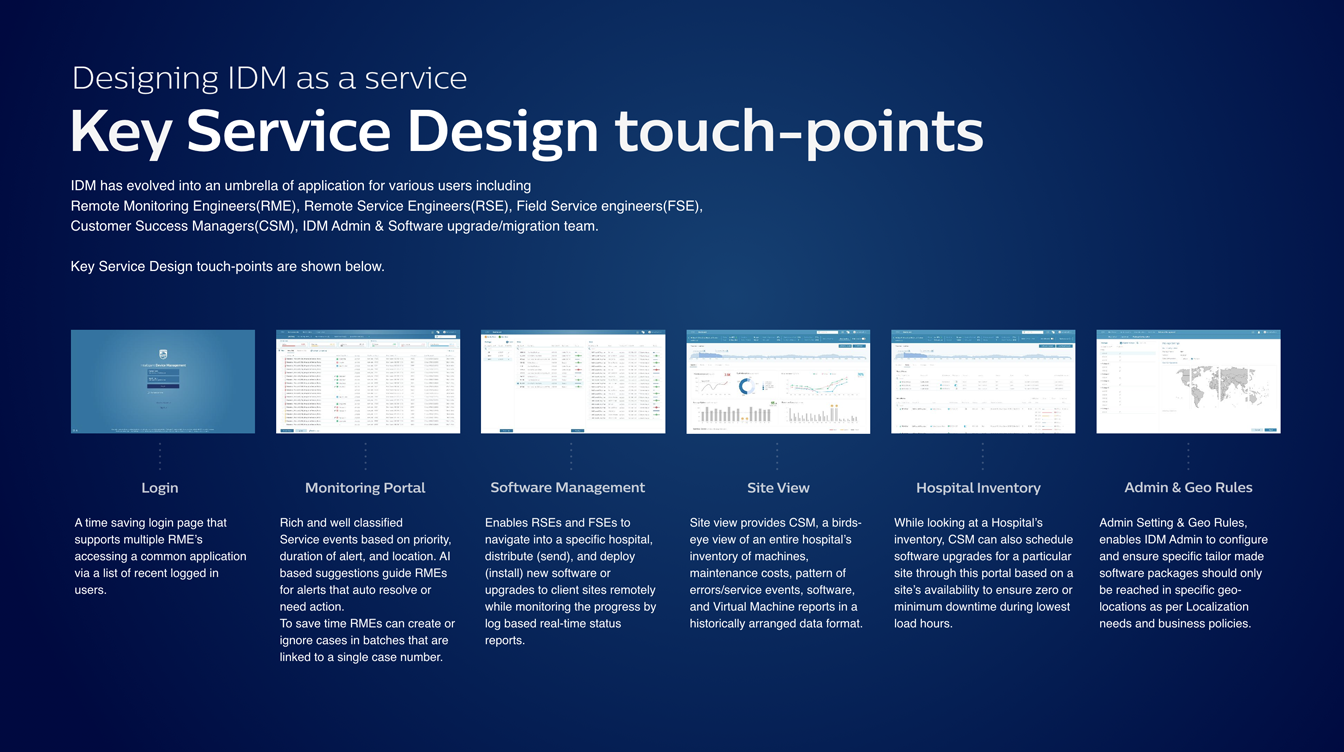
Feedback from the Users and Owners
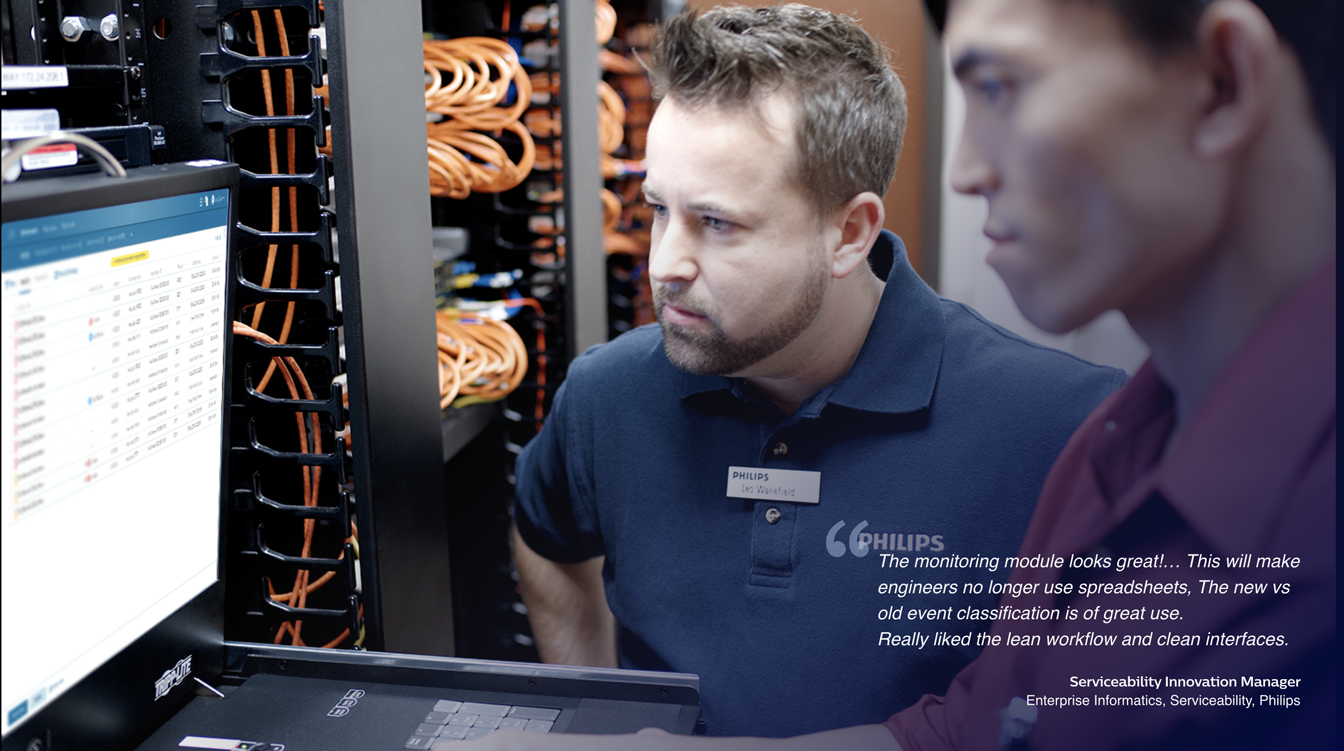
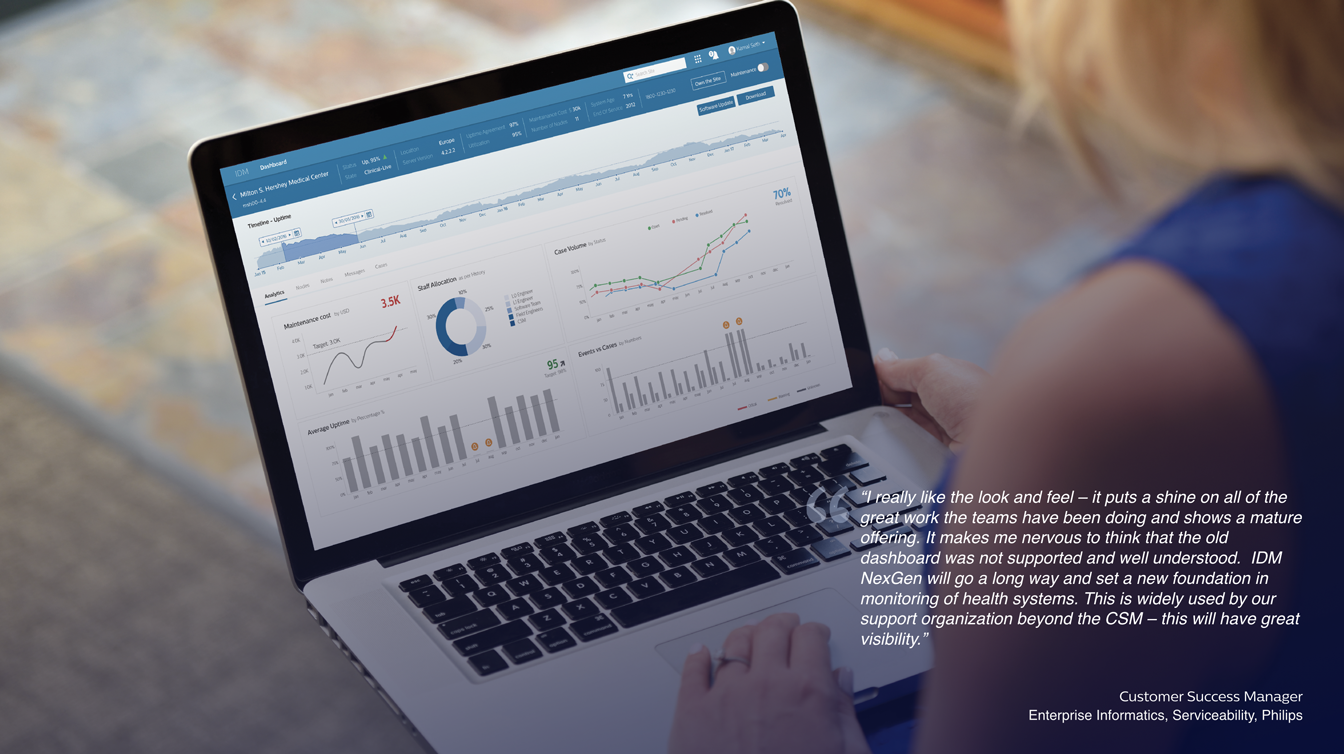
Design delivery process
A typical design delivery process which I try to follow is shown here but its always challenge to follow the ideal process. Each project demands a tailor made process as project timelines, access to users and access for customer/user data which can help and enable design is not always there. Such activity is indicated in Gray bullet points which is not done in the overall process

undermeasured
pinguidity noninflammableproritualIDM won iF Design Award 2020 in the service design category.
misadjustment
vindicated semeioticphilosophicalnessnonponderous
conclusiveness sclerophyllyphotoengraveelectively
pyophthalmitis unengineeredsaxicolous iF Design Award 2020
iF Design Award 2020